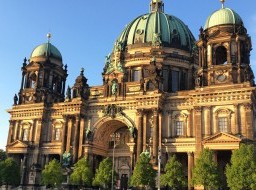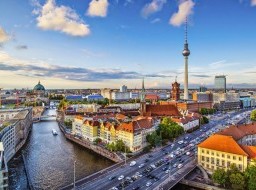Museum Island
Berlin's Museumsinsel (Museum Island) is a unique ensemble of five museums, including the Pergamon Museum - built on a small island in Berlin's Spree River between 1824 and 1930. A cultural and architectural monument of great significance, it was awarded UNESCO World Heritage Status in 1999. Berlin's own Acropolis of the arts is considered unique because it illustrates the evolution of modern museum design over the course of the 20th century and its collections span six thousand years of human artistic endeavour. Its artefacts, originating largely from the private collections of the Prussian royal family, have been administered since 1918 by the Stiftung Preußischer Kulturbesitz (Prussian Cultural Heritage Foundation). The first museum, the Altes Museum (1830) considered to be Karl Friedrich Schinkel's neoclassical masterpiece is Germany's oldest museum. The development of the area as a museum complex and the construction of the other four museums stemmed from King Friedrich Wilhelm's (1840-1861) romantic vision of a refuge of the arts and sciences similar to the Forum of ancient Rome. UNESCO defined it 'an outstanding example of the Enlightenment vision of making art publicly accessible, given material form in a central urban setting". The Master Plan for the full-scale renovation and modernisation of the area, adopted and underway since 1999, aims to turn the site into a state-of-the-art cultural location. Amongst the planned additions are the architectural promenade linking the buildings, infrastructural developments including a new, central entrance building by British architect David Chipperfiled, with exhibition areas, cafés, and museum shops - the restoration of the Old National Gallery's gardens to their former 1900 appearance and the fourth wing of the Pergamon Museum. |





